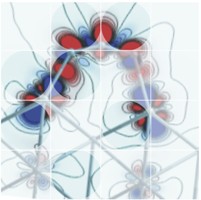
|
Research programme
Corrosion protection In the field of corrosion protection our research is focused on the following topics:
Superhydrophobic, self-cleaning and anti-icing coatings To produce a superhydrophobic surface usually a two-step process is used. The first step is a mechanical modification, i.e. extensive roughening of the surface under alkaline or acid etching aiming to produce protrusions at the surface which would allow the formation of Cassie-Baxter regime. The second step is the chemical modification, i.e. coverage of the rough surface by compound of a low surface energy. These compounds usually include long chain alkyl-, silane- or fluorinated compounds. As these chemicals are slightly soluble in water, the immersion is usually carried out in their ethanol solution. Superhydrophobic materials are useful in various industrial and every-day applications, for example as water repellent surfaces, anti-icing, self-cleaning, anti-fogging, anti-fouling, etc.
Projects related to superhydrophobic, self-cleaning and anti-icing coatings
|




